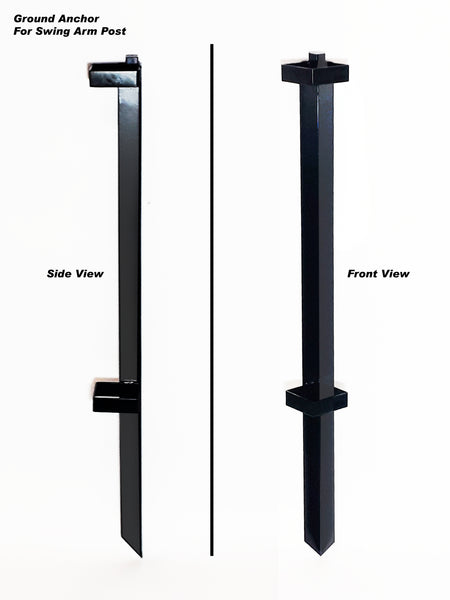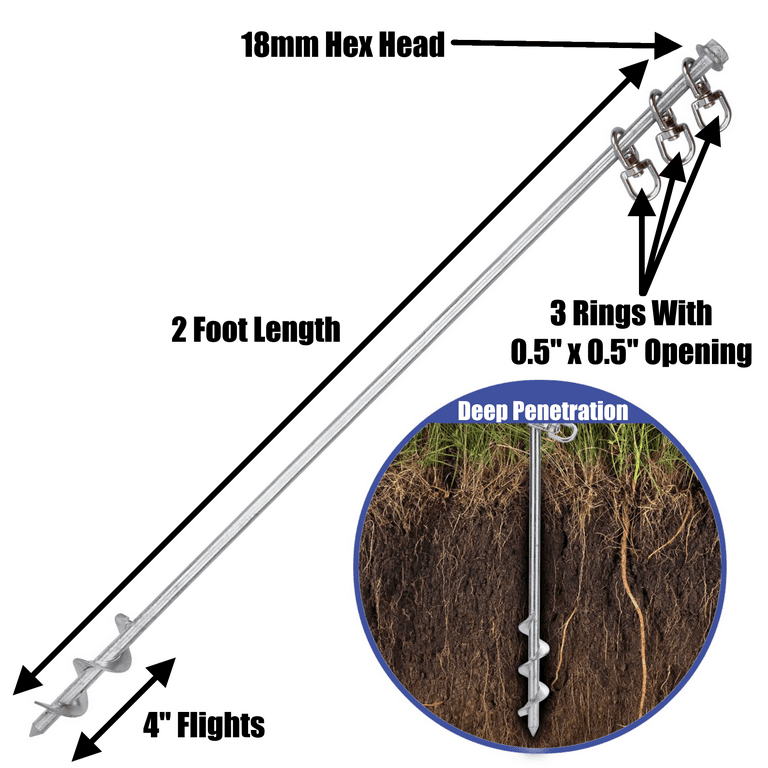New Advancements in Ground Anchor Design and Their Advantages
New Advancements in Ground Anchor Design and Their Advantages
Blog Article
Discover the Different Sorts Of Ground Anchor for Your Following Job
From auger anchors, which excel in varied dirt problems, to stake anchors made for short-lived installations, the options are countless. Furthermore, concrete and screw anchors present special benefits in details situations, while deadman anchors are tailored for applications calling for resistance to side pressures.

Auger Anchors
Auger anchors are a prominent option in different building and construction and landscaping jobs due to their distinct style and efficient anchoring abilities. These anchors include a helical screw-like shaft that is driven right into the ground, permitting a steady and safe and secure hold. The spiral design helps with easy installation and takes full advantage of resistance against side pressures, making auger supports especially effective in applications such as fencing, temporary frameworks, and erosion control.
The installment process of auger supports is relatively uncomplicated. Auger supports can be conveniently removed and reused, which includes to their cost-effectiveness and sustainability.
Among the considerable advantages of auger supports is their ability to disperse tons equally throughout the bordering soil, lowering the risk of dirt disruption and reducing ecological effect. Additionally, they are less prone to loosening or heaving in time contrasted to standard anchoring approaches. Auger supports are a superb selection for jobs calling for resilient and trusted anchoring solutions.

Stake Anchors
When it comes to protecting structures in a variety of outside applications, risk anchors use a trusted and straightforward service. These anchors are usually constructed from durable products such as steel or light weight aluminum, designed to hold up against ecological anxieties while offering optimum security. Their straightforward style enables fast installment, making them a suitable selection for temporary or long-term anchoring demands.
Risk anchors are especially useful in protecting tents, covers, and other lightweight frameworks against wind and weather condition. They operate by being driven into the ground at an angle, creating a strong hold that resists pull-out pressures - Ground Anchor. The effectiveness of stake anchors depends upon numerous factors, including dirt kind, wetness content, and the angle of installation
For included safety, many stake supports feature attachment points for bands or ropes, permitting stress changes as essential. In applications such as landscaping or building and construction, they can properly stabilize equipment or structures on unequal terrain. Generally, risk anchors provide a economical and flexible option for protecting various outdoor installations, making them a favored selection for professionals and DIY enthusiasts alike.
Concrete Anchors
Concrete anchors give a durable remedy for safeguarding frameworks to concrete surfaces, making sure security and safety and security in different applications. These supports are essential for tasks varying from household building and constructions to massive industrial installations. They come in different kinds, consisting of growth supports, adhesive anchors, and undercut supports, each developed for specific lots requirements and ecological problems.
Expansion supports count on mechanical systems to hold the concrete when set up. They are ideal for tool to heavy-duty applications. Sticky anchors make use of high-strength epoxy or resin to bond the anchor to the concrete, providing superior load-bearing capacities, particularly in cracked concrete circumstances. Undercut supports develop a special shape within the concrete, supplying outstanding original site holding power, especially in applications where tensile loads are widespread.
Choosing the suitable concrete anchor includes considering variables such as the weight of the load, the condition of the concrete, and environmental conditions. Correct setup techniques are critical to make sure optimal performance and dependability. When executed correctly, concrete supports substantially improve the structural honesty of various tasks, making them essential in contemporary construction techniques. Comprehending the certain demands of your project will certainly help in selecting the best kind of concrete support for the job.
Screw Anchors

Screw supports are a functional fastening service that can be successfully utilized in a selection of applications where standard concrete supports may not suffice. These anchors contain a helical layout that permits them to be quickly driven into the ground, making them perfect for usage in dirt and other substrates. Their one-of-a-kind structure provides outstanding holding power and resistance to pull-out pressures, making them appropriate for various projects, from landscaping to architectural support.
One of the primary benefits of screw anchors is their ease of installment. They require minimal devices and can often be mounted without click for info the demand for excavation, which conserves both time and labor costs. Furthermore, screw anchors can be removed and recycled, supplying a sustainable remedy for short-term applications.
Screw anchors are especially advantageous in locations where dirt conditions are testing, such as loosened or sandy soils. Their ability to be mounted at varying depths enables modification based on certain task requirements. Overall, screw supports offer a trusted and effective anchoring approach, look at this website making them an outstanding selection for contractors and engineers looking for reliable solutions for their projects.
Deadman Anchors
Deadman anchors serve as a durable solution for supporting frameworks in challenging problems, specifically where conventional anchoring approaches might fail. These supports contain large, heavy objects hidden underground, which create resistance versus lateral pressures. The layout normally includes a straight element, such as a block of concrete or a steel plate, hidden in the soil, to which straps or wires are affixed.
The efficiency of deadman anchors depends on their ability to distribute loads over a bigger area, decreasing the threat of failure in unpredictable dirt conditions. They are specifically helpful in applications such as keeping walls, temporary structures, and incline stabilization, where soil movement can jeopardize the stability of the framework.
Setup of deadman supports calls for mindful preparation to ensure they are positioned at the appropriate deepness and alignment, maximizing their load-bearing capability. While they may require more labor and product than lightweight supports, their dependability in negative conditions makes them very useful for lasting projects. Additionally, deadman anchors are versatile and can be adjusted to various applications, making them a go-to selection for designers encountering one-of-a-kind difficulties in their tasks.
Final Thought
Auger supports stand out in diverse dirt problems, while risk anchors fit short-lived applications. For concrete surfaces, development and adhesive anchors provide trusted choices, and screw supports use versatility in difficult surfaces.
In addition, concrete and screw anchors existing special benefits in details circumstances, while deadman anchors are tailored for applications calling for resistance to side pressures - Ground Anchor.Auger anchors are a preferred choice in different building and landscape design tasks due to their unique layout and efficient anchoring capacities. They come in various types, consisting of development supports, adhesive anchors, and undercut supports, each developed for specific load needs and environmental conditions
Sticky supports make use of high-strength epoxy or material to bond the anchor to the concrete, offering remarkable load-bearing abilities, particularly in broken concrete circumstances. Generally, screw supports provide a trustworthy and efficient securing approach, making them a superb selection for engineers and contractors looking for efficient solutions for their jobs.
Report this page